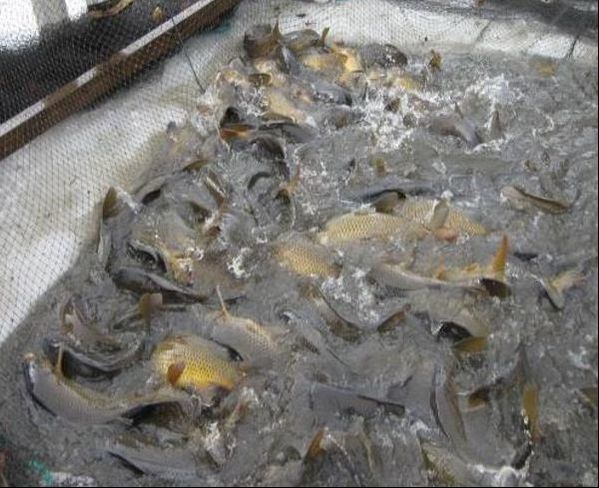Twin Lake Project Next Steps
|
Carp Harvesting
The population estimate found that the carp population is too large to sustain without negatively impacting water quality. Harvesting carp can help improve water quality and clarity in the lakes. The carp tracking as well as reports from the community have identified locations where they congregate in winter and when spawning. In January 2018 a commercial fisherman removed 10,600 pounds of carp from the lake and 15,000 pounds of bullhead. The March 2019 commercial removal was unsuccessful when the fish migrated overnight, but during spring 2019 spawning over 1,900 pounds were removed from Ryan Creek and Upper Twin Lake. Annual spring removals from Ryan Creek will continue until they are no longer productive. Fish Barriers The carp tracking has found that the fish are moving into and out of the lake system, although probably not in large numbers. However, harvesting won't have long-lasting benefits if even just a few get in. The carp management project installed fish barriers at two key locations to prevent this from happening. A barrier at the France Avenue weir in Robbinsdale prevents carp from moving in from Ryan Lake and Shingle Creek. Another barrier at culverts under County Road 10 on the north end of Upper Twin prevents carp from reaching a wetland complex north of CR 10 that is a likely spawning location. Aquatic Vegetation Management As water clarity improves, aquatic vegetation growth will likely increase. Shallow lakes such as Upper Twin are vegetation-dominant, and the plant roots play an important role in stabilizing sediment There are native species in Twin Lakes, but there is also Curly-leaf pondweed present. To reduce the biomass of Curly-leaf and to prevent its spread, chemical treatment will likely be necessary. The Commission, in partnership with the DNR, treated Upper Twin in spring 2018 and spring 2020. Winter Aeration Upper Twin and Ryan Lakes have experienced several fish winter kills when dissolved oxygen in the water beneath the ice falls too low to support life. Species such as bluegill are especially vulnerable to low oxygen conditions. Bluegill prey on carp eggs, and keeping a healthy panfish population is essential to keeping carp from successfully reproducing. Aeration was explored for Upper Twin Lake but was ultimately not implemented due to technical difficulties. |
New
The Twin Lake Carp Management project final report can be found here. Carp removals, water quality monitoring, and aquatic vegetation management will continue as needed until the project goals are met. Community Meeting The Commission and the cities of Crystal, Brooklyn Center, Robbinsdale, and Minneapolis hosted a community meeting on December 13, 2017 at the Crystal Community Center to review collected data and discuss next steps. View the presentation here: 12-13-17 Community Meeting Presentation |


